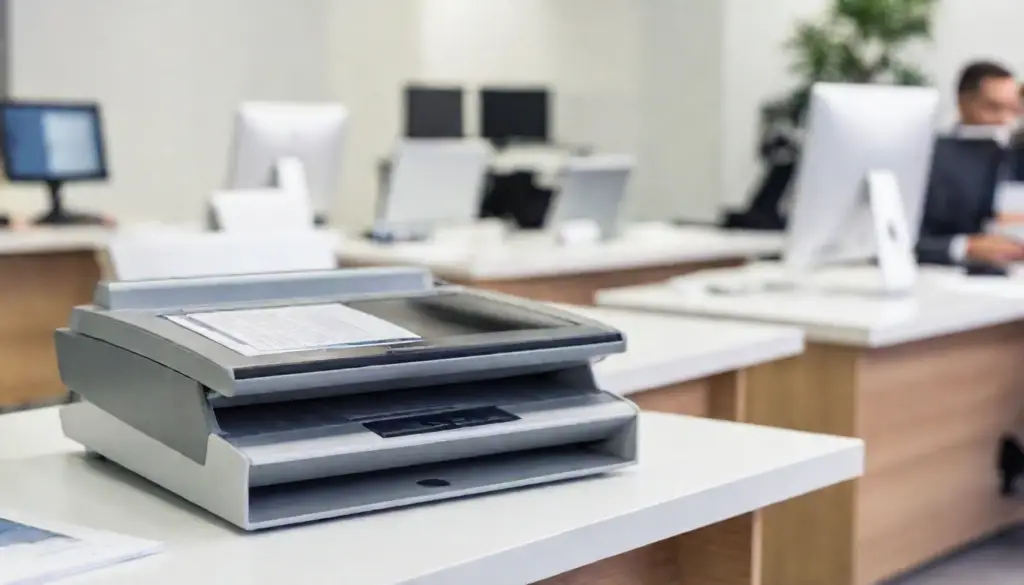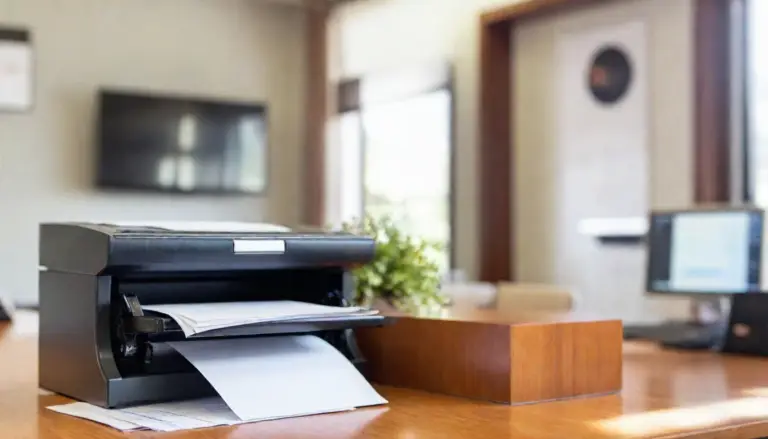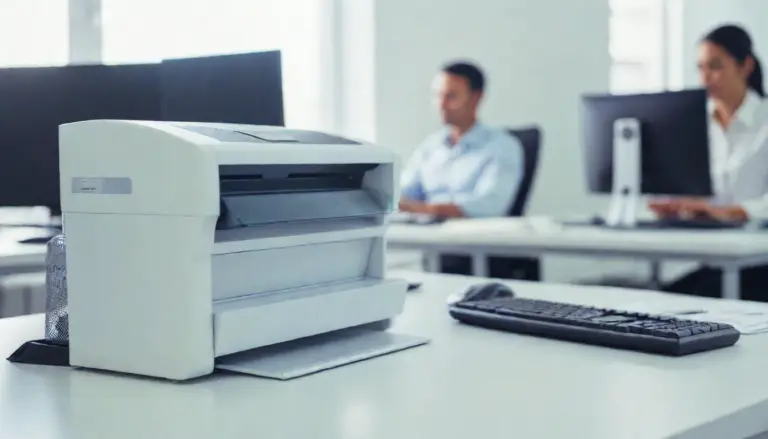What is a document scanner?
A desktop document scanner converts physical documents into an electronic format, often in the form of a jpeg or PDF. The user feeds the materials into the scanner, and the files show up in the software program on your computer.
Whether you’re shopping for your corporate office or home office, choosing the right document scanner for your needs isn’t easy. Between the manufacturers, features, and software, there is a multitude of considerations. Price point, too, plays into the decision.
By taking a careful look and asking the right questions, you can confidently select the correct document scanner for your needs.
1. How many documents do you plan to scan daily?
Of course, we’re looking for an average here, but daily volume is crucial to consider when comparing document scanners. Some users or environments genuinely do need the workforce scanners that put 350 horsepower pickups to shame. Others would be fine with a less industrious model that still provides excellent quality.
2. Do you want a document scanner with OCR?
Unless you plan only to scan photos, the answer to this should be yes. OCR, or optical character recognition, translates words on a scanned document into computer-friendly metadata. This technology makes it searchable and editable. ICR, or intelligent character recognition, is similar software that converts handwriting into searchable metadata. Needless to save, this characteristic significantly improves productivity.
When shopping for document scanners, remember that OCR software may be listed under the software name, such as CaptureOnTouch from Canon.
3. What is the document scanner software?
In order for the document scanner and computer to scan, digitize, and receive a document, they must communicate. The two devices connect via a software, often called a driver.
Most scanners today use a TWAIN driver. This legacy driver features a lot of built-in functionality, allowing users to complete scanning jobs without thinking about issues like:
- OS (operating system) of the computer
- Double-sided scanning
- Cropping
- Indicating the page length
4. What type of scanner works best for your environment?
- ADF scanners (also called automatic document feeders) allow you to put a group of documents in the feeder, walk away, and come back to find them all on your computer.
- Flatbed scanners require that you scan each record one at a time and both sides separately. While this is time-consuming, flatbed scanners work well for bent or damaged materials.
- ID scanners (also called A6) work with materials that are maximum 4.1″ x 5.8″. You can read more about the use of ID scanners here.
- Networked document scanners can integrate into your organization’s network, meaning you can send scans directly to any email, fax, printer, FTP server, web server, or any computer connected to your company network.
- Multi-function devices are usually reserved for the corporate office versus the home office. They include scanning, faxing, copying, and printing into one machine and are often networked.
Did this list help you in considering document scanners? Let us know! As vendor-neutral technology experts, we’re here to help with any technical questions you may have. Browse our lineup of Canon document scanners here.






